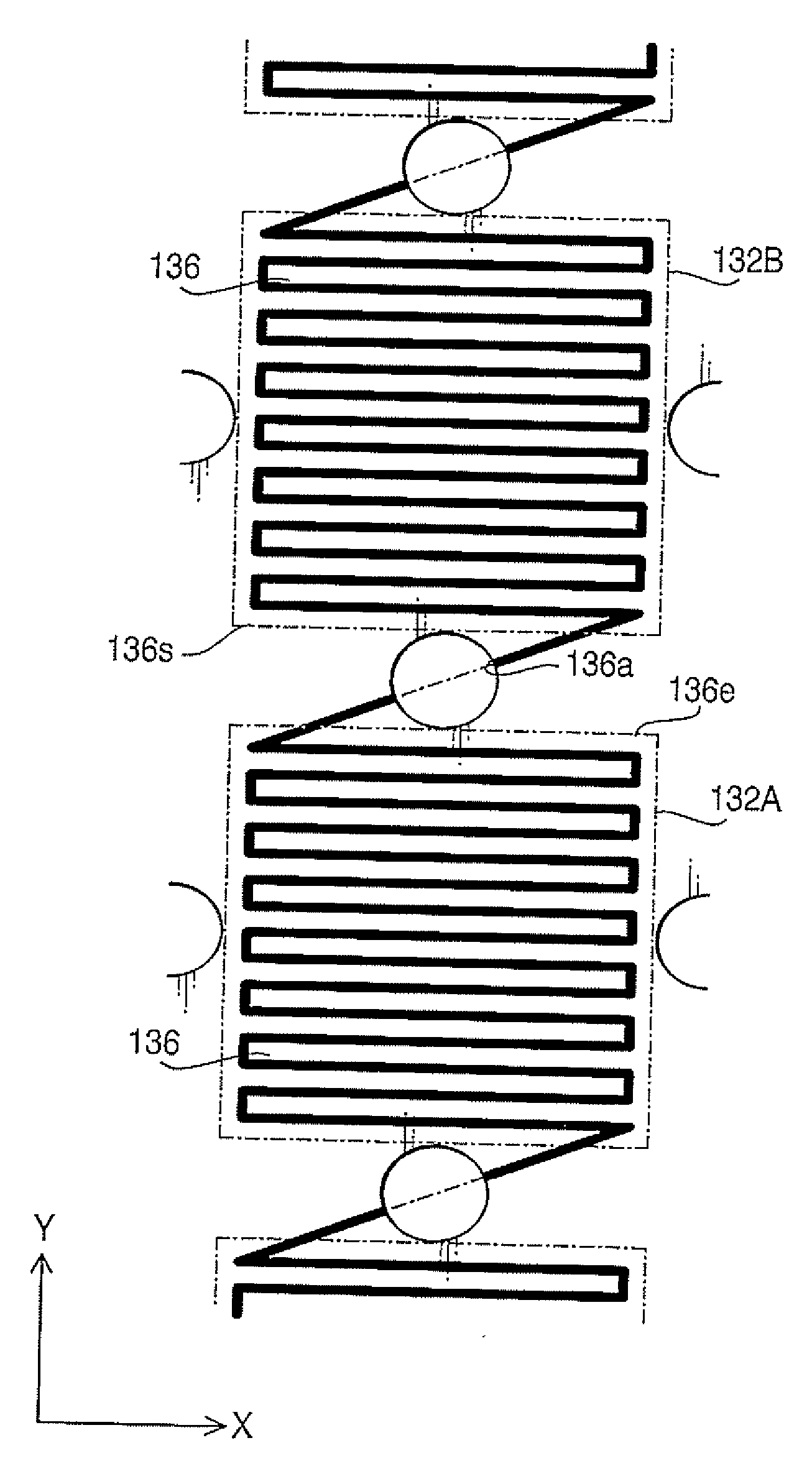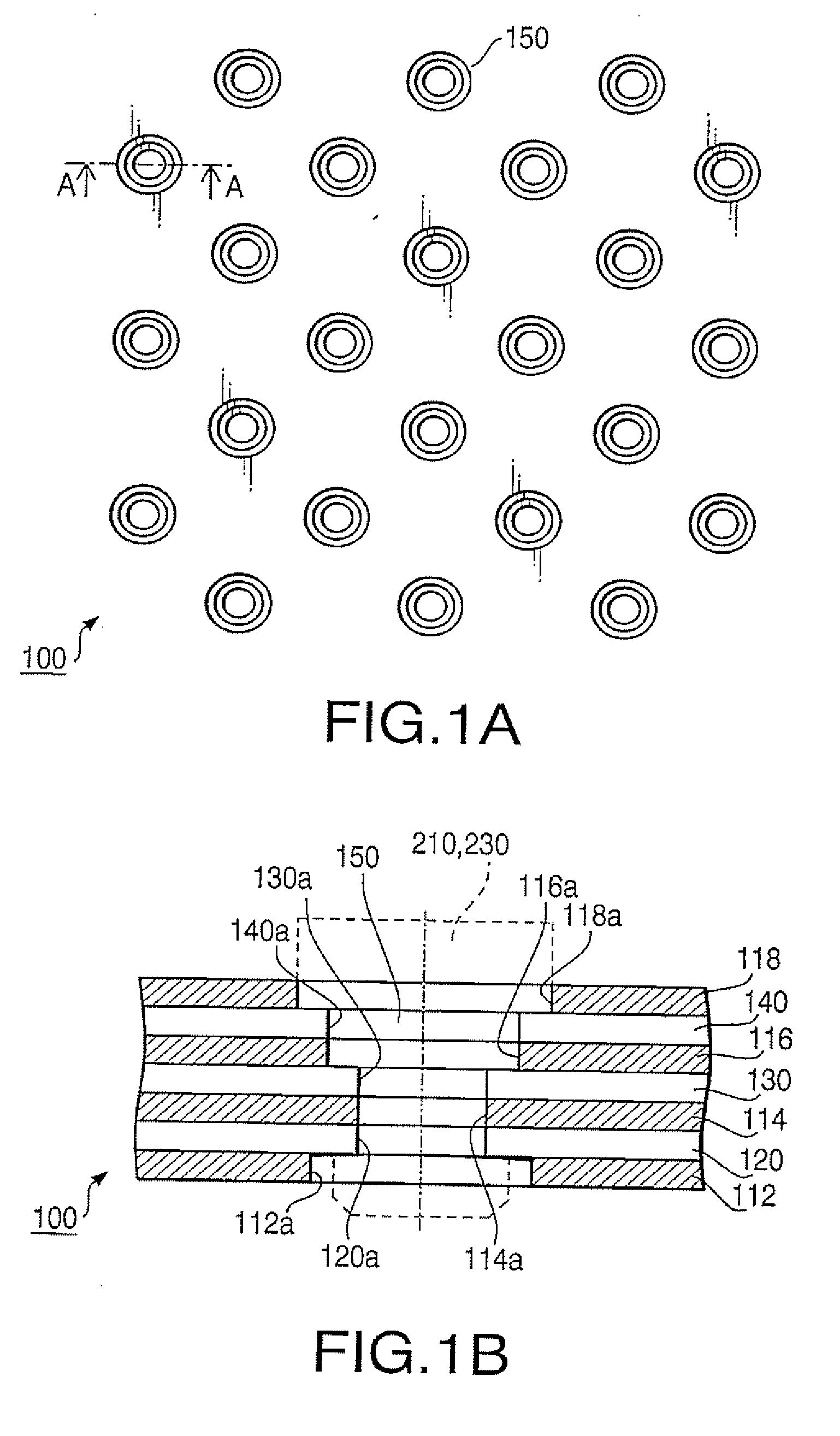Conductive layer, manufacturing method of the same, and signal transmission substrate
a technology of conductive layer and manufacturing method, which is applied in the direction of fixed connection, semiconductor/solid-state device details, coupling device connection, etc., can solve the problems of reducing the yield of diagnostic vests, requiring the manufacture of diagnostic vests, and difficulty in precisely aligning the low electrical resistance layer. achieve the effect of improving the accuracy of alignmen
- Summary
- Abstract
- Description
- Claims
- Application Information
AI Technical Summary
Benefits of technology
Problems solved by technology
Method used
Image
Examples
first embodiment
[0048]FIG. 1A is a plan view of a signal transmission substrate 100 according to a first embodiment. FIG. 113 is a cross-sectional view of the signal transmission substrate 100 along a line A-A in FIG. 1A. The signal transmission substrate 100 is employed in a communication device 300 (see FIGS. 4 and 5). The signal transmission substrate 100 has a laminated structure of seven layers including an insulating layer 112, a ground layer 120, an insulating layer 114, a signal layer 130, an insulating layer 116, a power layer 140, and an insulating layer 118 from the bottom.
[0049] Each of the insulating layers 112, 114, 116 and 118 is formed of, for example, fabric having flexibility, extensibility and an insulating property. The insulating layer 112 insulates the ground layer 120 from the outside, the insulating layer 114 insulates the signal layer 130 from the ground layer 120, lie insulating layer 116 insulates the signal layer 130 from the power layer 140, and the insulating layer 11...
second embodiment
[0085]FIG. 7 is a partial top view of the signal layer 130B of a signal transmission substrate according to a second embodiment. In the second embodiment, the conductive thread 136 is sewed in the fabric forming the high resistance region 134 so that lines of the conductive thread 136 are elongated both in the X and Y directions in a low resistance region 132z. In this embodiment, each low resistance region 132z is formed in two sewing processes. The two sewing processes include a first process of sewing the conductive thread 136 in the fabric to form lines of the conductive thread 136 extending in the X direction, and a second process of sewing the conductive thread 136 in the fabric to form lines of the conductive thread 136 extending in the Y direction perpendicularly intersecting with the X direction. The first process may be performed ahead of the second process, or the second process may be performed ahead of the first process,
[0086] In this embodiment, the lines of the condu...
third embodiment
[0088]FIG. 8 is a partial top view of a signal layer 130C of a signal transmission substrate according to a third embodiment. In the third embodiment, the conductive thread 136 is sewed in the fabric forming the high resistance region 134 so that a spiral pattern of the conductive thread 136 is formed in each low resistance region 132y. The low resistance region 132y may be formed by a single sewing process of sewing the conductive thread 136 in the low resistance region 132y to form a spiral pattern. Since lines of the conductive thread 136 extending both in the X and Y directions can be formed in a single sewing process, the manufacturing process can be reduced in comparison with the case of the sewing process of the second embodiment.
PUM
 Login to View More
Login to View More Abstract
Description
Claims
Application Information
 Login to View More
Login to View More - R&D
- Intellectual Property
- Life Sciences
- Materials
- Tech Scout
- Unparalleled Data Quality
- Higher Quality Content
- 60% Fewer Hallucinations
Browse by: Latest US Patents, China's latest patents, Technical Efficacy Thesaurus, Application Domain, Technology Topic, Popular Technical Reports.
© 2025 PatSnap. All rights reserved.Legal|Privacy policy|Modern Slavery Act Transparency Statement|Sitemap|About US| Contact US: help@patsnap.com



